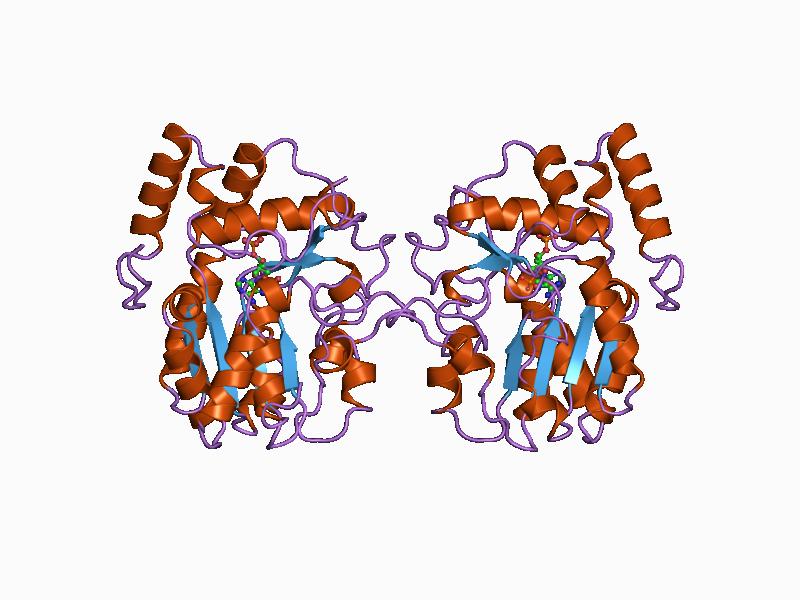|
Phosphoribosyltransferase
A phosphoribosyltransferase is a type of transferase enzyme. Types include: *Adenine phosphoribosyltransferase *Hypoxanthine-guanine phosphoribosyltransferase * Orotate phosphoribosyltransferase * Quinolinate phosphoribosyltransferase *Uracil phosphoribosyltransferase Uracil phosphoribosyltransferase is an enzyme which creates UMP from uracil Uracil () (symbol U or Ura) is one of the four nucleobases in the nucleic acid RNA. The others are adenine (A), cytosine (C), and guanine (G). In RNA, uracil binds t ... Transferases {{enzyme-stub ... [...More Info...] [...Related Items...] OR: [Wikipedia] [Google] [Baidu] |
Orotate Phosphoribosyltransferase
Orotate phosphoribosyltransferase (OPRTase) or orotic acid phosphoribosyltransferase is an enzyme involved in pyrimidine biosynthesis. It catalyzes the formation of orotidine 5'-monophosphate (OMP) from orotate and phosphoribosyl pyrophosphate. In yeast and bacteria, orotate phosphoribosyltransferase is an independent enzyme with a unique gene coding for the protein, whereas in mammals and other multicellular organisms, the catalytic function is carried out by a domain of the bifunctional enzyme UMP synthase (UMPS). Biological background As OPRTase is part of a bifunctional complex UMP synthase in humans, the function and stability of this enzyme is not necessarily directly associated with disorders in the human body. It is however reasonable to believe that a dysfunction in one of the enzymes will cause a dysfunction of the whole enzyme. Defects in UMP synthase is associated with hypochromic anemia. In mammals, this bifunctional enzyme UMPS converts orotic acid into uridin ... [...More Info...] [...Related Items...] OR: [Wikipedia] [Google] [Baidu] |
Adenine Phosphoribosyltransferase
Adenine phosphoribosyltransferase (APRTase) is an enzyme encoded by the ''APRT'' gene, found in humans on chromosome 16. It is part of the Type I PRTase family and is involved in the nucleotide salvage pathway, which provides an alternative to nucleotide biosynthesis de novo in humans and most other animals. In parasitic protozoa such as giardia, APRTase provides the sole mechanism by which AMP can be produced. APRTase deficiency contributes to the formation of kidney stones (urolithiasis) and to potential kidney failure. Function APRTase catalyzes the following reaction in the purine nucleotide salvage pathway: Adenine + Phosphoribosyl Pyrophosphate (PRPP) → Adenylate (AMP) + Pyrophosphate ( PPi) In organisms that can synthesize purines de novo, the nucleotide salvage pathway provides an alternative that is energetically more efficient. It can salvage adenine from the polyamine biosynthetic pathway or from dietary sources of purines. Although APRTase is functionally re ... [...More Info...] [...Related Items...] OR: [Wikipedia] [Google] [Baidu] |
Hypoxanthine-guanine Phosphoribosyltransferase
Hypoxanthine-guanine phosphoribosyltransferase (HGPRT) is an enzyme encoded in humans by the ''HPRT1'' gene. HGPRT is a transferase that catalyzes conversion of hypoxanthine to inosine monophosphate and guanine to guanosine monophosphate. This reaction transfers the 5-phosphoribosyl group from 5-phosphoribosyl 1-pyrophosphate (PRPP) to the purine. HGPRT plays a central role in the generation of purine nucleotides through the purine salvage pathway. Function HGPRT catalyzes the following reactions: HGPRTase functions primarily to salvage purines from degraded DNA to reintroduce into purine synthetic pathways. In this role, it catalyzes the reaction between guanine and phosphoribosyl pyrophosphate (PRPP) to form GMP, or between hypoxanthine and phosphoribosyl pyrophosphate (PRPP) to form inosine monophosphate. Substrates and inhibitors Comparative homology modelling of this enzyme in '' L. donovani'' suggest that among all of the computationally screened compounds, pent ... [...More Info...] [...Related Items...] OR: [Wikipedia] [Google] [Baidu] |
Nicotinate-nucleotide Diphosphorylase (carboxylating)
In enzymology, a nicotinate-nucleotide diphosphorylase (carboxylating) () is an enzyme that catalyzes the chemical reaction :nicotinate D-ribonucleotide + diphosphate + CO2 \rightleftharpoons pyridine-2,3-dicarboxylate + 5-phospho-alpha-D-ribose 1-diphosphate The 3 substrates of this enzyme are nicotinate D-ribonucleotide, diphosphate, and CO2, whereas its two products are pyridine-2,3-dicarboxylate and 5-phospho-alpha-D-ribose 1-diphosphate. This enzyme belongs to the family of glycosyltransferases, specifically the pentosyltransferases. The systematic name of this enzyme class is nicotinate-nucleotide:diphosphate phospho-alpha-D-ribosyltransferase (carboxylating). Other names in common use include quinolinate phosphoribosyltransferase (decarboxylating), quinolinic acid phosphoribosyltransferase, QAPRTase, NAD+ pyrophosphorylase, nicotinate mononucleotide pyrophosphorylase (carboxylating), and quinolinic phosphoribosyltransferase. This enzyme participates in nicotinate ... [...More Info...] [...Related Items...] OR: [Wikipedia] [Google] [Baidu] |
Uracil Phosphoribosyltransferase
Uracil phosphoribosyltransferase is an enzyme which creates UMP from uracil and phosphoribosylpyrophosphate. This protein may use the morpheein model of allosteric regulation In biochemistry, allosteric regulation (or allosteric control) is the regulation of an enzyme by binding an effector molecule at a site other than the enzyme's active site. The site to which the effector binds is termed the ''allosteric sit .... References External links * * EC 2.4.2 {{2.4-enzyme-stub ... [...More Info...] [...Related Items...] OR: [Wikipedia] [Google] [Baidu] |
Transferase
A transferase is any one of a class of enzymes that catalyse the transfer of specific functional groups (e.g. a methyl or glycosyl group) from one molecule (called the donor) to another (called the acceptor). They are involved in hundreds of different biochemical pathways throughout biology, and are integral to some of life's most important processes. Transferases are involved in myriad reactions in the cell. Three examples of these reactions are the activity of coenzyme A (CoA) transferase, which transfers thiol esters, the action of N-acetyltransferase, which is part of the pathway that metabolizes tryptophan, and the regulation of pyruvate dehydrogenase (PDH), which converts pyruvate to acetyl CoA. Transferases are also utilized during translation. In this case, an amino acid chain is the functional group transferred by a peptidyl transferase. The transfer involves the removal of the growing amino acid chain from the tRNA molecule in the A-site of the ribosome a ... [...More Info...] [...Related Items...] OR: [Wikipedia] [Google] [Baidu] |
